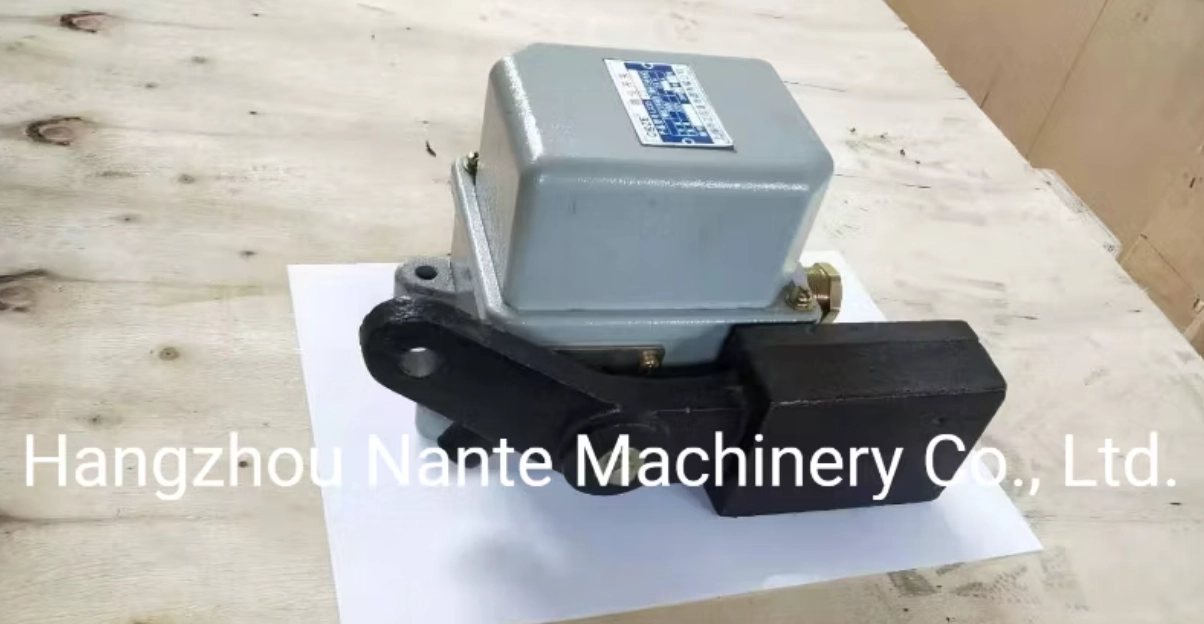Protect Your Load: Crane Hoist Limit Switch for Upper and Lower Travel
Protect Your Load: Crane Hoist Limit Switch for Upper and Lower Travel
Date: 2025-07-25 Share:
Introduction
Cranes are the heart of jobs like construction, manufacturing, and logistics. They lift and move heavy stuff to keep projects zipping along. But their power can be risky—accidents might hurt folks, wreck gear, or worse. Crane height limiters, also called hoist limit switches, are super cool safety tools that stop cranes from lifting too high or dropping too low. These gadgets keep work safe and smooth, protecting workers, equipment, and precious loads. Nante Crane, a big name in crane making, offers neat height limiters to meet safety needs across tons of industries. Let’s dive into how these work, their perks, and why Nante Crane is your go-to for crane safety.
Understanding Crane Height Limiters
Crane height limiters are awesome devices that stop a crane’s hoist from going past safe up or down limits. They set clear boundaries to avoid over-hoisting, which could crash into overhead stuff, or under-hoisting, which risks loose ropes or dropped loads. These tools are a must for safe work in high-stakes spots.
How They Work
- Mechanical Limit Switches: These use physical bits like cams or levers to halt the hoist at a set limit. They’re simple, tough, and don’t need outside power, perfect for basic jobs.
- Electrical Limit Switches: These use sensors to spot the hoist’s position and send signals to stop it. They tie into modern crane systems for extra precision and flexibility.
Their Role
- Upper Travel Limit Switches: These stop the hoist from going too high, dodging crashes with structures or gear.
- Lower Travel Limit Switches: These keep the hoist from dropping too far, preventing load drops or rope damage.
By guarding loads, cranes, and people, height limiters are key for safe crane work.
Types of Crane Height Limiters
Crane height limiters come in different styles, each fitting specific cranes and job needs. Here’s the rundown:
Mechanical Limit Switches
- Description: Simple, sturdy gadgets that use physical contact to stop the hoist.
- Working Principle: A cam or lever flips the switch when the hoist hits a set limit.
- Advantages: Cheap, no power needed, and super tough in rough spots.
- Limitations: Less exact, might need hand tweaks, and not great for changing lift heights.
Electrical Limit Switches
- Description: Fancy devices that work with crane control systems.
- Working Principle: Sensors track the hoist’s spot and signal to stop movement.
- Advantages: Super precise, adjustable, works with automated setups, and can have safety alarms.
- Limitations: Needs power, costs more, and might get glitchy with electromagnetic noise.
Smart/Digital Limit Switches
New tech like IoT-enabled limit switches brings real-time tracking and data logging. These smart gadgets monitor hoist use, predict when maintenance is needed, and boost safety with clever analytics, making them awesome for high-tech jobs.
Benefits of Using Crane Height Limiters
Crane height limiters bring heaps of cool perks for safer, faster work:
- Enhanced Safety: By stopping over- or under-hoisting, these gadgets keep accidents from crashes or falling loads away. They keep operators and workers safe.
- Equipment and Load Protection: They save crane parts like ropes and hoists from damage and keep loads safe from mishandling.
- Regulatory Compliance: Height limiters match safety rules like OSHA and ISO, helping companies stay legal and skip fines.
- Cost Savings: Fewer accidents mean less repair cash, less downtime, and lower risk costs, boosting work speed.
Selecting the Right Crane Height Limiter
Picking the best height limiter is super important for top safety and performance. Here’s what to think about:
Factor Consideration
- Crane Type: Make sure the limiter fits your crane, like overhead, gantry, or mobile ones.
- Load Capacity: The limiter must handle the crane’s max load and lift height.
- Environmental Conditions: Dusty, wet, or hot sites need tough, weather-proof limiters.
- Compatibility: The limiter should work smoothly with the crane’s control system, especially for electrical ones.
Talking to pros like Nante Crane helps you pick a limiter that’s just right for your job.
Installation and Maintenance
Installation Guidelines
- Mount the limit switch tight on the hoist or trolley.
- Set the upper and lower limits based on the crane’s specs.
- Test the switch to make sure it kicks in at the right spots.
Maintenance Tips
- Check often for wear, rust, or misalignment.
- Test switches regularly to ensure they work right.
- Clean and grease mechanical parts as the maker suggests.
Troubleshooting
- Issue: Switch doesn’t work.
- Solution: Look for loose wires, broken parts, or wrong settings. For electrical switches, check the power and control system.
Case Studies and Success Stories
Real-world stories show how awesome height limiters are:
- Construction Site Safety: On a busy site, an upper travel limit switch stopped a crane from smashing into a building’s frame, saving cash and keeping work going.
- Manufacturing Plant Efficiency: In a factory, a lower travel limit switch kept a load from dropping, protecting workers and the load.
Nante Crane’s customers rave about their height limiters, with one saying, “Nante Crane’s switches made our work safer without slowing us down.”
Why Choose Nante Crane
- Meets global standards (EN ISO, FEM, CMAA, GB, IEC).
- Serves over 5,000 customers in 50+ countries with 200+ partners.
- Offers custom solutions and strong after-sales help.
Keep your crane work safe with Nante Crane’s awesome height limiters. Reach out today for a free chat or demo to find the perfect safety fix for your needs.
Frequently Asked Questions (FAQs)
What’s the Difference Between Upper and Lower Travel Limit Switches?
Upper switches stop the hoist from going too high, dodging crashes. Lower switches keep it from dropping too far, avoiding load drops or rope slack.
How Do I Know If My Crane Needs a Height Limiter?
Cranes near overhead stuff or needing exact load placement get big safety boosts from height limiters.
Are Crane Height Limiters Easy to Install?
It depends on the limiter and crane, but Nante Crane gives expert tips for easy setup.
What Are the Legal Requirements for Using Height Limiters on Cranes?
Rules like OSHA and ISO often call for safety devices like height limiters, depending on the place and industry.
Can Nante Crane Help with Retrofitting Existing Cranes with Height Limiters?
Yup! Nante Crane offers custom solutions for new and old cranes, including retrofitting.
Conclusion
Crane height limiters are must-haves for safe and smooth crane work. They protect workers, gear, and loads while keeping up with safety rules. Nante Crane, with its global reach and cool solutions, is your best bet for crane safety. Check out their height limiters today to keep your operations safe and sound.





